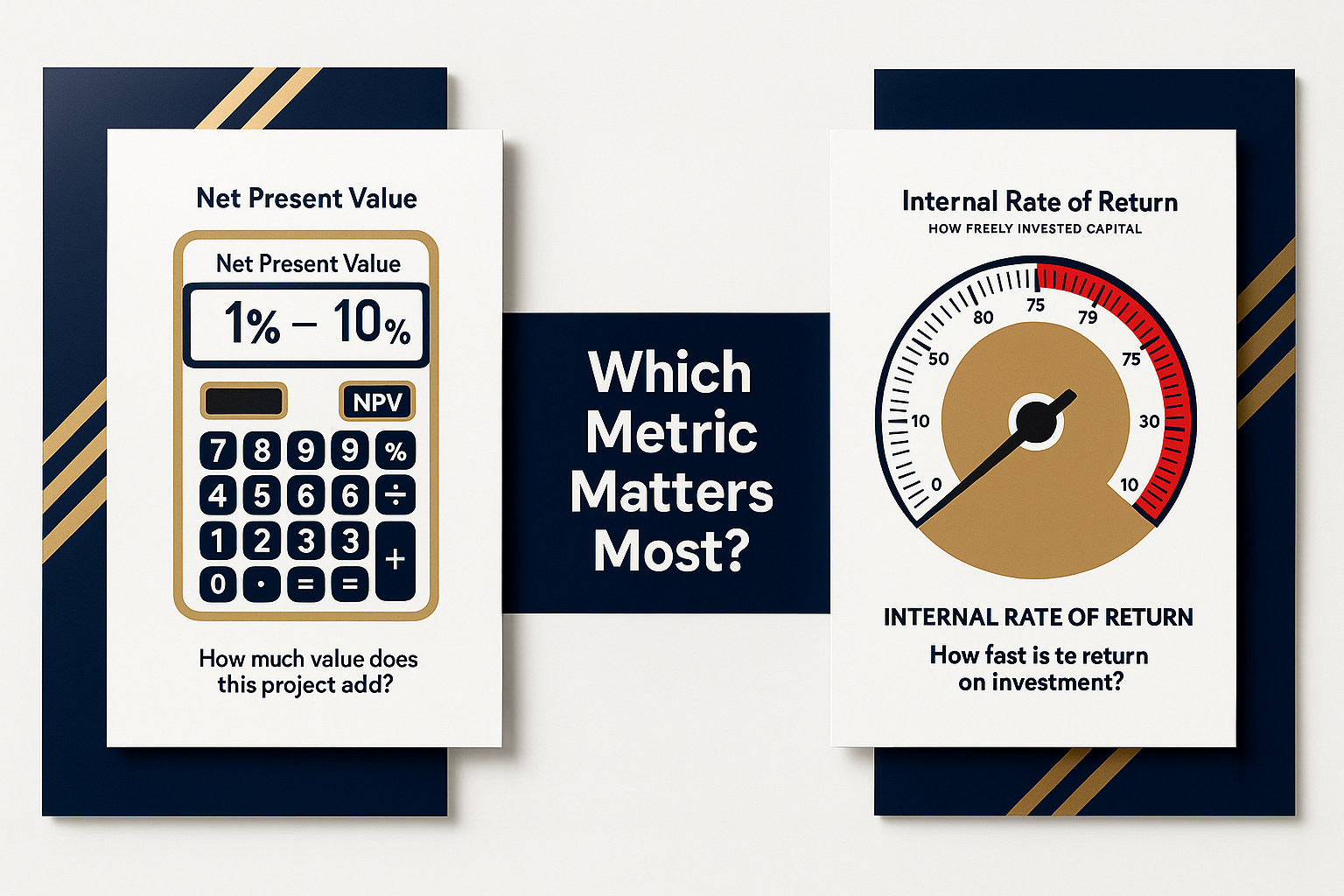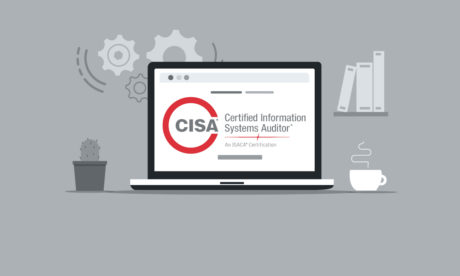
Choosing the right financial lens for upstream energy decisions
In the oil and gas industry, where billion-dollar decisions ride on production forecasts, capital expenditure, and commodity prices, the financial models behind those decisions must be as robust as the engineering that supports them. Two of the most commonly used metrics in economic evaluations are Net Present Value (NPV) and Internal Rate of Return (IRR). But which one should you prioritize and why?
At IAA Energy Resources, we train professionals to go beyond formulas and apply financial thinking that reflects operational reality. In this post, we’ll break down both metrics, compare their strengths and weaknesses, and help you determine which matters most, depending on your project, stakeholders, and strategy.
What Is NPV?
Net Present Value (NPV) is the total present value of a project’s cash inflows and outflows over its life, discounted at a chosen rate (often the company’s Weighted Average Cost of Capital or WACC). A positive NPV indicates a project is expected to generate more value than it costs.
Why NPV Matters:
- It provides a direct estimate of value creation in today’s terms.
- Helps in ranking projects based on absolute profitability.
- Useful for long-term, capital-intensive projects, like oilfield development.
Formula:
NPV = ∑ (Net Cash Flow / (1 + r)ⁿ) – Initial Investment
What Is IRR?
Internal Rate of Return (IRR) is the discount rate at which a project’s NPV becomes zero. It represents the rate of return a project is expected to generate. The project may be considered viable if the IRR exceeds your hurdle rate (e.g., 10–15%).
Why IRR Matters:
- Easily compared to company benchmarks or borrowing costs.
- Useful when investors or executives want a quick gauge of ROI efficiency.
- Helpful in portfolio balancing, especially with multiple projects of different sizes.
NPV vs. IRR: Key Differences
| Feature | NPV | IRR |
| Focus | Value | Rate of Return |
| Best For | Large, long-term projects | Smaller or quick-turn projects |
| Risk Sensitivity | More realistic (with discount rate) | Can be misleading with non-standard cash flows |
| Decision Making | Better for ranking the absolute value | Better for comparing efficiency |
Common Pitfalls with IRR
- Multiple IRRs: Projects with alternating cash flows may produce multiple IRRs, confusing decision-makers.
- Doesn’t Account for Reinvestment Rate: IRR assumes reinvestment at the same rate, which may not be realistic.
- Misleading for Mutually Exclusive Projects: IRR may favour smaller projects with higher percentage returns, even if NPV is lower.
When to Prioritise NPV
Choose NPV when:
- You’re dealing with long-term, high-CAPEX upstream ventures.
- Comparing projects with different cash flow sizes and durations.
- Seeking to measure the actual dollar value added to the business.
When IRR Works Best
Use IRR when:
- You need a quick performance benchmark.
- You’re dealing with projects of similar scale and short timelines.
- Comparing investments with limited capital allocation.
IAA’s Perspective: What Really Matters?
At IAA Energy Resources, we teach that neither metric exists in a vacuum. Smart energy professionals learn to interpret both NPV and IRR together, alongside payback period, break-even analysis, and scenario-based cash flow modelling.
- NPV gives you the what.
- IRR tells you how fast.
But only a trained analyst can see what’s hidden between the lines.
Final Thoughts
In oil and gas project evaluation, the right metric depends on your decision context, capital constraints, and risk tolerance. Use NPV to drive value-focused decisions and IRR to communicate investment appeal. Better yet—model both, interpret wisely, and align with strategy.
Want to strengthen your team’s economic modelling skills?
Email us at info@iaaenergyresources.com to learn how IAA’s training programs help professionals interpret and apply key financial metrics to real-world upstream scenarios.






0 responses on "NPV vs. IRR: Which Metric Matters Most?"